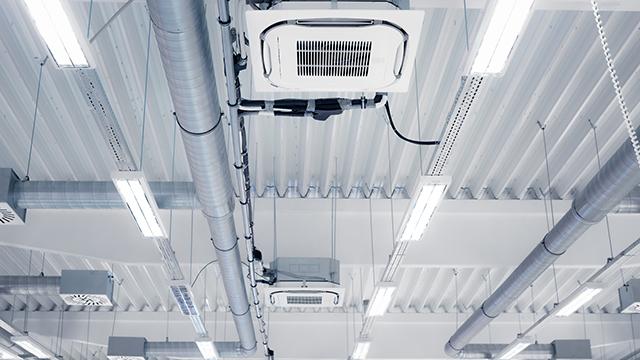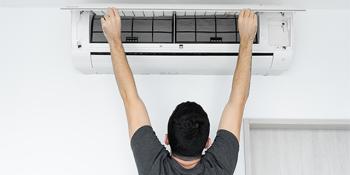|
Coming soon: On July 1, new incentive rates and program requirements for the Commercial Lighting Incentive Program will take effect. Contact us to learn more! |
CLIP will only accept applications for lighting retrofit projects from qualifying business customers whose average monthly electrical demand is above 200 kilowatts (kW).
Los Angeles Department of Water and Power (LADWP) non-residential electric customers in good standing, whose average monthly electrical use is 250 kW or less may receive lighting upgrades and other energy and water efficiency benefits, free-of-charge, by enrolling in the Commercial Direct Install (CDI) Program.
CLIP Incentive Levels
CLIP provides incentives on the installation of newly purchased and installed energy-saving lighting and controls. With CLIP’s calculated savings approach, you can tailor your lighting efficiency upgrades to better meet your lighting needs, attain greater energy saving, and receive higher incentive payments!
Incentive levels are based on the calculated energy savings of each project, with rates ranging from $0.08 to $0.24 per kilowatt-hour (kWh) of annualized savings.
| INCENTIVE LEVELS | ||
|---|---|---|
| Category | Measures | Incentive per kWh Saved |
| A | Lamp-only retrofits; other Examples: Screw-in LED lamps Linear fluorescent tube only replacement |
$0.08 |
| B | Tier 1 LED fixture replacement or retrofit - Installed products do not meet one or more program requirements specified in Table 4. Examples: Non-conforming LED fixture replacement (LED and driver) |
$0.08 |
| C | Tier 2 Lighting fixture replacement or retrofit - Installed products meet ALL program requirements specified in Table 4. Examples: Fluorescent fixture retrofit, LED fixture replacement (LED and driver) |
$0.24 |
| D | Sensor-based controls Examples: Occupancy/vacancy controls Daylight controls |
$0.15 |
| E | Interactive Effects | $0.08 |
Energy saving lighting equipment included:
- LED Interior Ceiling Mounted, Downlight, and Highbay Fixtures
- Exterior LED Pole Mounted and Wallpack Fixtures
- LED Screw-In Lamps
- Occupancy Sensors and Daylight Controls
- New Induction Lamps and Fixtures
- High Performance Reduced Wattage Fluorescent Lamps and Ballasts
- Among others!
A reminder that CLIP requires new lighting measures be approved by LADWP prior to installation in order to be eligible for an incentive. LADWP is diligent about certifying that applications submitted meet all program requirements prior to issuance of a Notice to Proceed (NTP). LADWP will not approve incentives for products installed that differ from those approved for the incentive.
Join us at our next workshop
We hold monthly workshops to help contractors and customers understand the CLIP process. A review of the application documents, product eligibility requirements, and incentive levels will be discussed.
As the situation with the Coronavirus (COVID-19) is continually evolving, LADWP is taking proactive steps to protect the health and safety of our customers, employees, and contractors. As a result, CLIP workshops, which are normally held on-site, will be held via WebEx webinars until further notice.
Time: 9:00 a.m. to 11:30 a.m.
Upcoming Workshop Dates
January 25, 2024
February 22, 2024
March 26, 2024
March 28, 2024
April 25, 2024
May 16, 2024
May 30, 2024
June 13, 2024
June 27, 2024
July 25, 2024
August 22, 2024
September 26, 2024
October 24, 2024
November 21, 2024
December 19, 2024
To submit a reservation, please email [email protected] and specify the workshop date that you would like to attend. For each attendee, please include their name, email address, phone number, and the company they work for.
Lighting Contractors can join LADWP's Commercial Lighting Incentive Program (CLIP) Recognized Vendor Program
If you are a lighting contractor working in the Los Angeles area, the LADWP's CLIP Recognized Vendor Program can help your business succeed. For more information on how this program can help your business succeed, go to CLIP – Recognized Vendor Program.
How to apply
Customers may submit an application online, by mail or by fax.
CLIP applicants must have
-
An LADWP non-residential electric account in good standing, whose average monthly electrical use is above 200 kW
-
A lighting retrofit project that achieves a minimum of 10% energy savings
-
Qualifying equipment which received LADWP approval prior to purchase, installation, and operation
-
The applicant is responsible for meeting all program requirements and for compliance with state/county/city governments, property owner and/or homeowner’s association regarding local conditions, restrictions, codes, ordinances, rules and regulations prior to installation. Applicant shall obtain any permits required and provide them to LADWP upon request.
Follow these steps to start the CLIP application process
-
Provide the detailed scope of work for the proposed retrofit in the CLIP Workbook (compatible with Excel 2007). It will provide the potential incentive amount. Note: The incentive will not calculate if the minimum energy savings requirement is not met.
-
Read the Program Requirements and CLIP Terms and Conditions.
-
Complete and sign Efficiency Solutions Non-Residential Program Application (Part A).
-
Complete and sign CLIP Project Information (Part B).
-
Take photographs representative of the existing fixture types, lamps, ballasts, etc. Submit a minimum of one luminaire photo taken at the installation address for each unique measure proposed. Example of acceptable photograph.
-
Provide product specifications for each proposed lighting product. Include the Lighting Facts label for each LED lighting product. Customers must submit test reports for LED products not listed in the Lighting Facts database.
-
Complete and sign an IRS Form W-9 for the LADWP Customer of Record
This program shall at all times be subject to change or termination without notice.
Disclaimer
By applying for an LADWP rebate and/or program, personal information provided may be subject to public disclosure by requesting parties, pursuant to the California Public Records Act.



